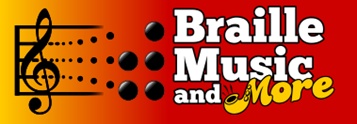Introduction
Braille was invented by Louis Braille. Braille transcription is used to help the braille music to help the visually impaired individuals learn music. It empowers musicians who are blind or have low vision to read and learn music. It focuses mainly on reading the musical notations rather than learning music through the ear. This method is also considered to be a remarkable bridge to this sonic realm.
In this blog, we will be focusing on the discussion of some essential elements of Braille music that allow visually challenged people to read and create music.
Elements of Braille Music
1. The Musical Key: Braille Alphabets
The heart of braille music is the braille alphabet. Just like the way you read the Braille for going through the text, braille music includes a collection of six dots in two columns of three in each. Each combination of the dots represents a specific musical element, such as the musical notes or the dynamics, rests, pitch, and more. People can use their fingers to read and decode musical notes by using this tactile code as a key to unlock the musical score.
2. Musical Notes of Braille Music
Notes in Braille music are represented by particular dot combinations inside the Braille cell. Pitch is indicated by the dots' locations on the six-cell grid, and a variety of symbols represents duration. Because Braille music can reproduce melody and allow players to feel the rise and fall of notes beneath their fingertips, it is incredibly beautiful.
3. Harmony & Chords
Braille music uses the sense of touch to allow thyme blind people to feel this harmony. Chord symbols are understood by learning Braille and allowing the musicians to memorize the harmonic structure of music. They understand how individual notes come together to create a tapestry of music. The richness of musical expression is enhanced by the capacity to perceive and understand these intricate relationships.
4. Texture of the sound
Braille music also helps blind musicians to understand the volume and intensity of each note. Using specific symbols, they can understand and explain the dynamics of the music. By learning the dynamics of a sound, musicians can feel the richness and flow of a musical composition.
5. Rhythm
Rhythm is like the heartbeat of music, and braille notation helps capture the essence of the rhythm with precision. By learning the basics of braille music sheets, musicians can understand the rests, pattern of rhythm, and time signatures.
6. Expressive nuances
Apart from the fundamental components, expressive nuances in music, like staccato, legato, and fermata, are represented by symbols in Braille. These guiding principles allow for individual expression and creativity in the shaping and interpretation of the music. Through their sense of these minute details, musicians enrich their performances with feeling, giving each performance a distinct and personalized interpretation.
Conclusion
In conclusion, the foundational components of braille music—the Braille alphabet—offer musicians a tactile road map through the complex world of musical scores. The ability of musicians to create, interpret, and convey the magic of music through touch shows that melody is a universal language that everyone can understand. Braille Music and More efficiently guides blind musicians to read and create music by learning Braille Music.


No comments yet